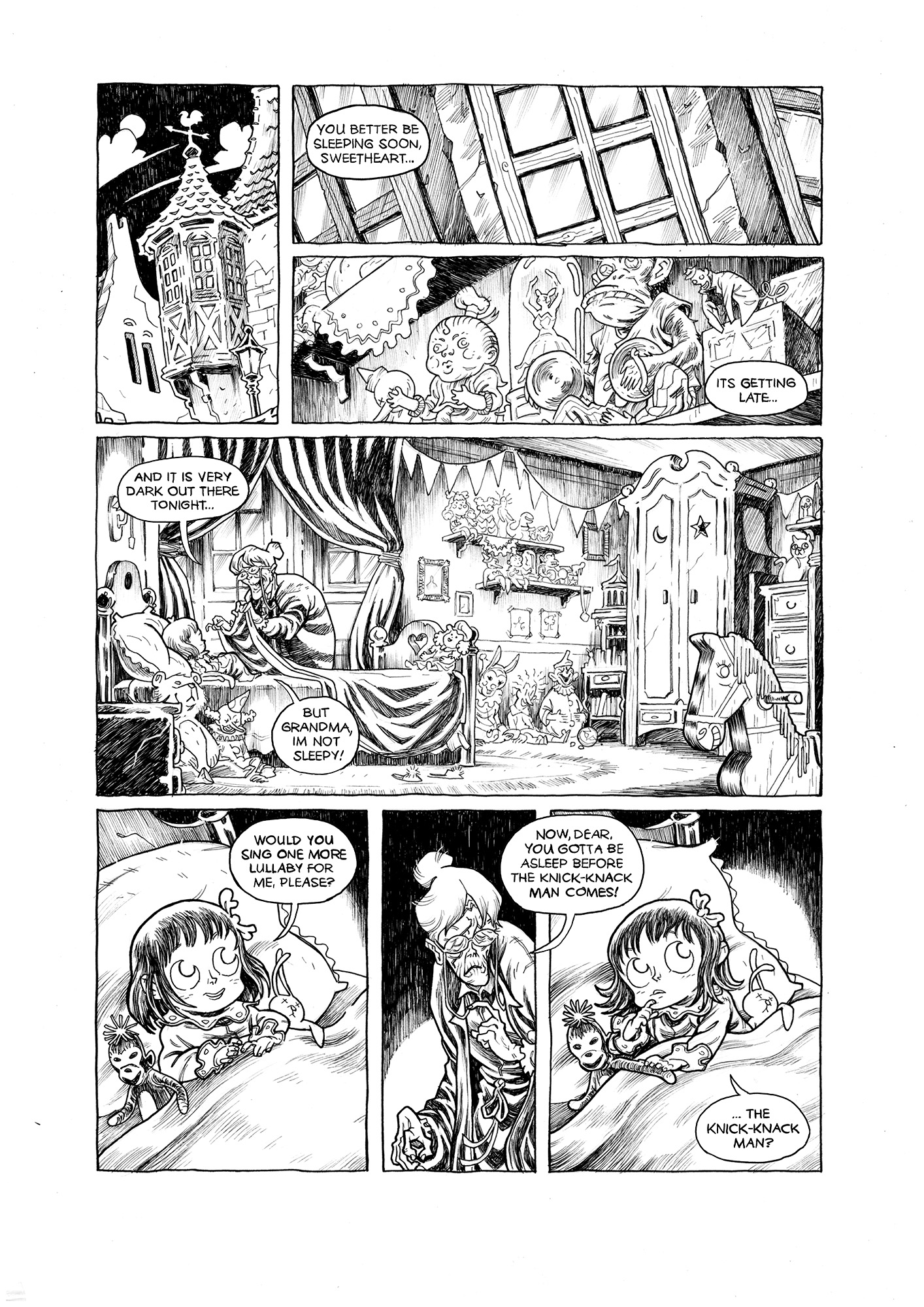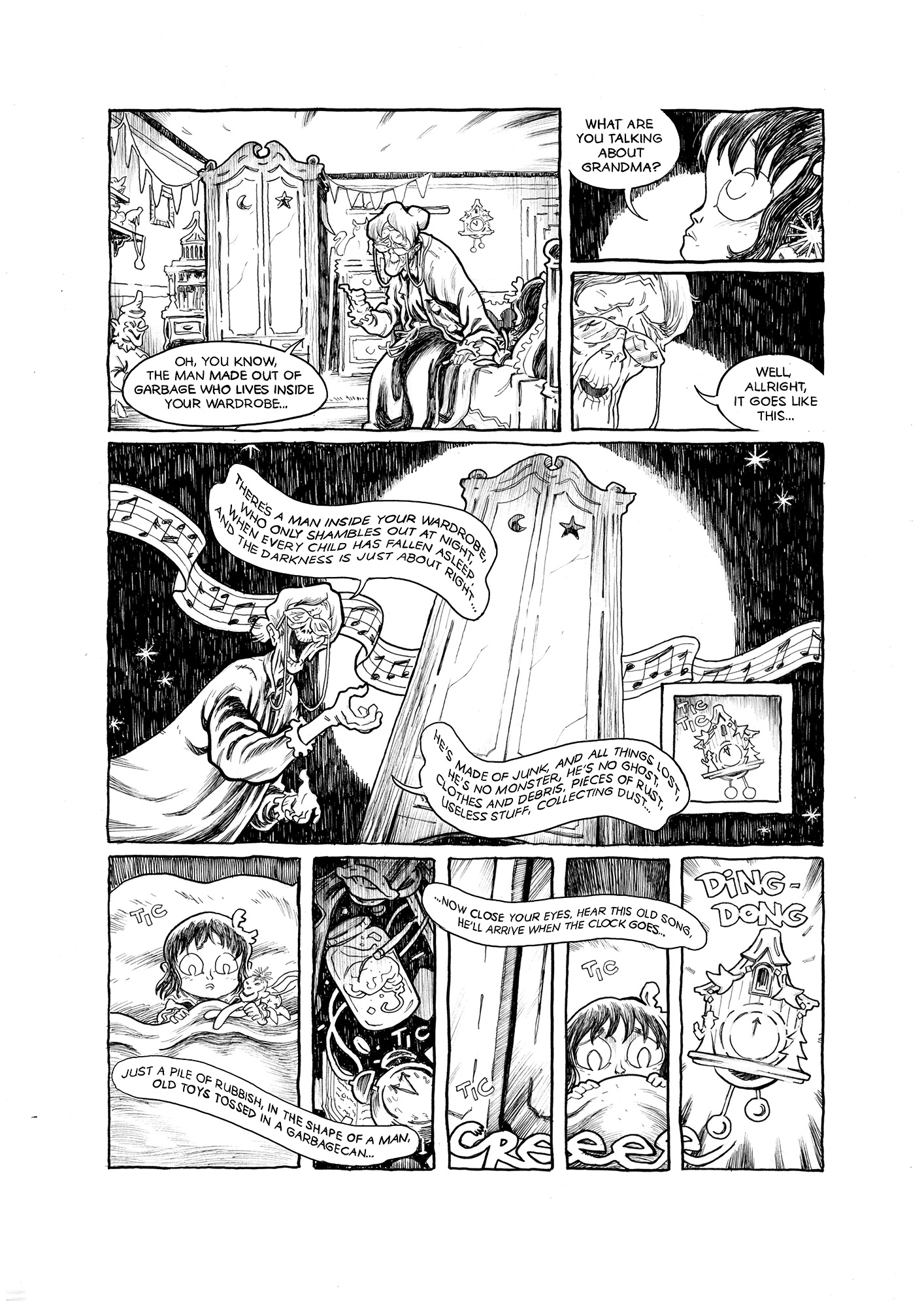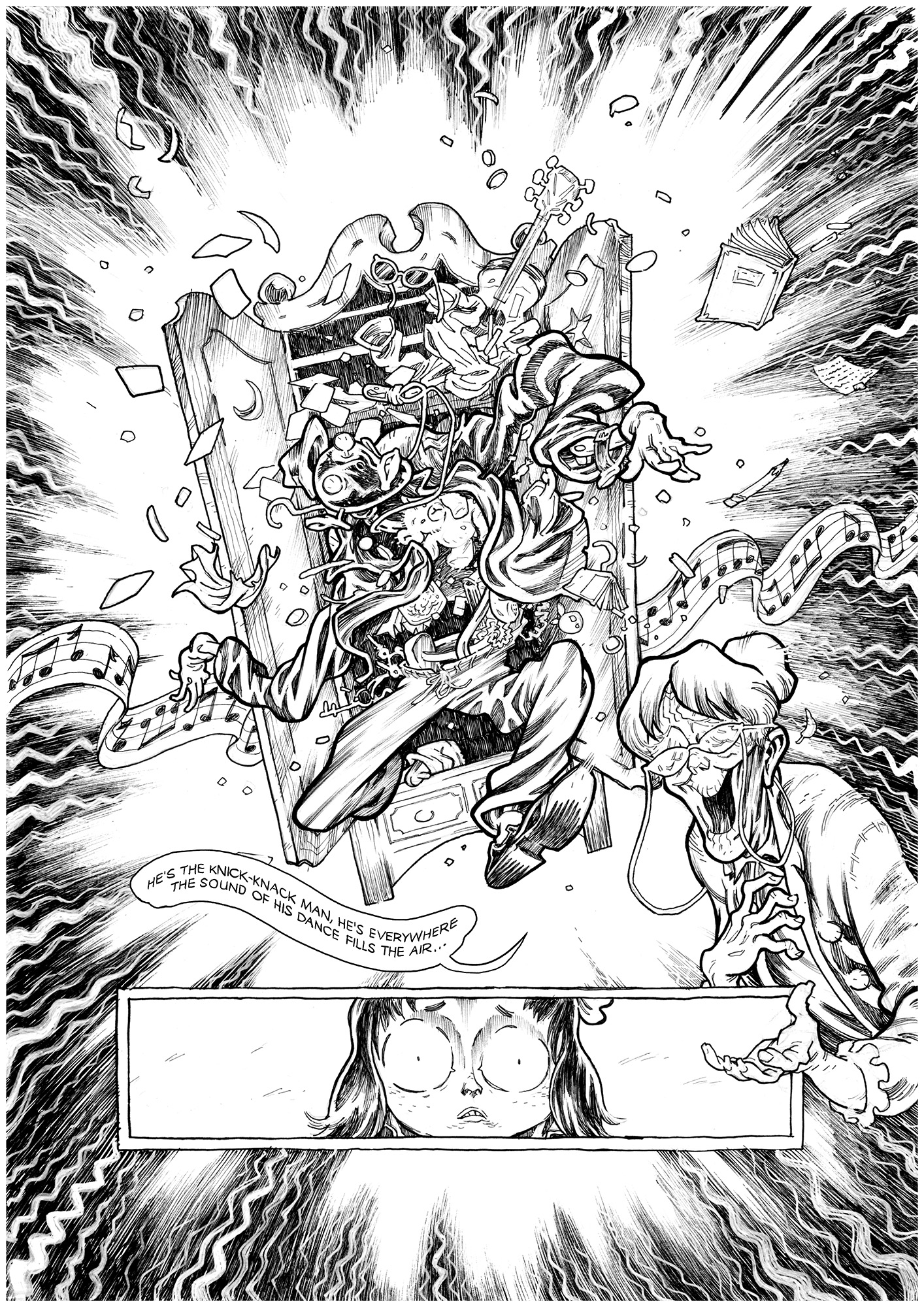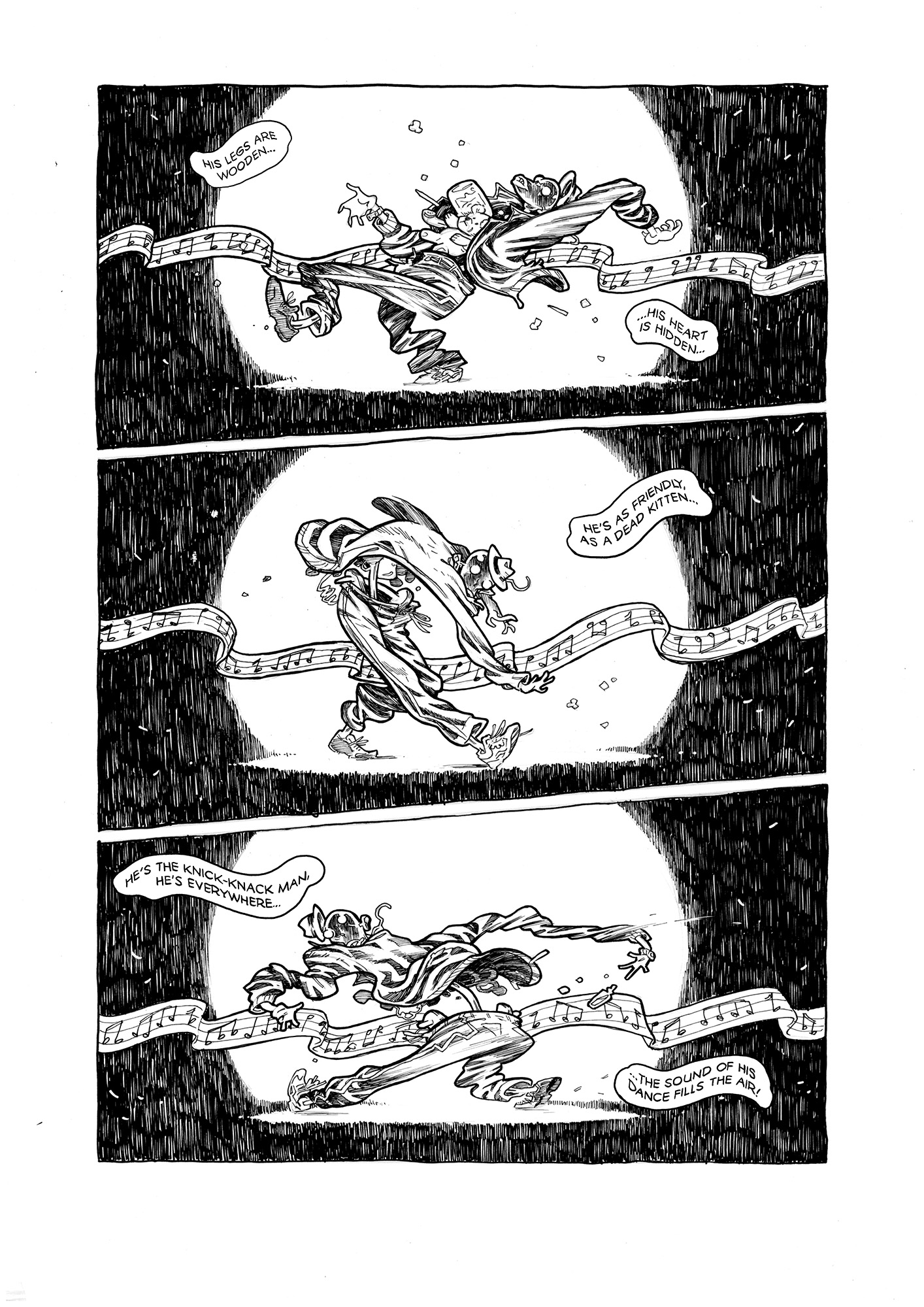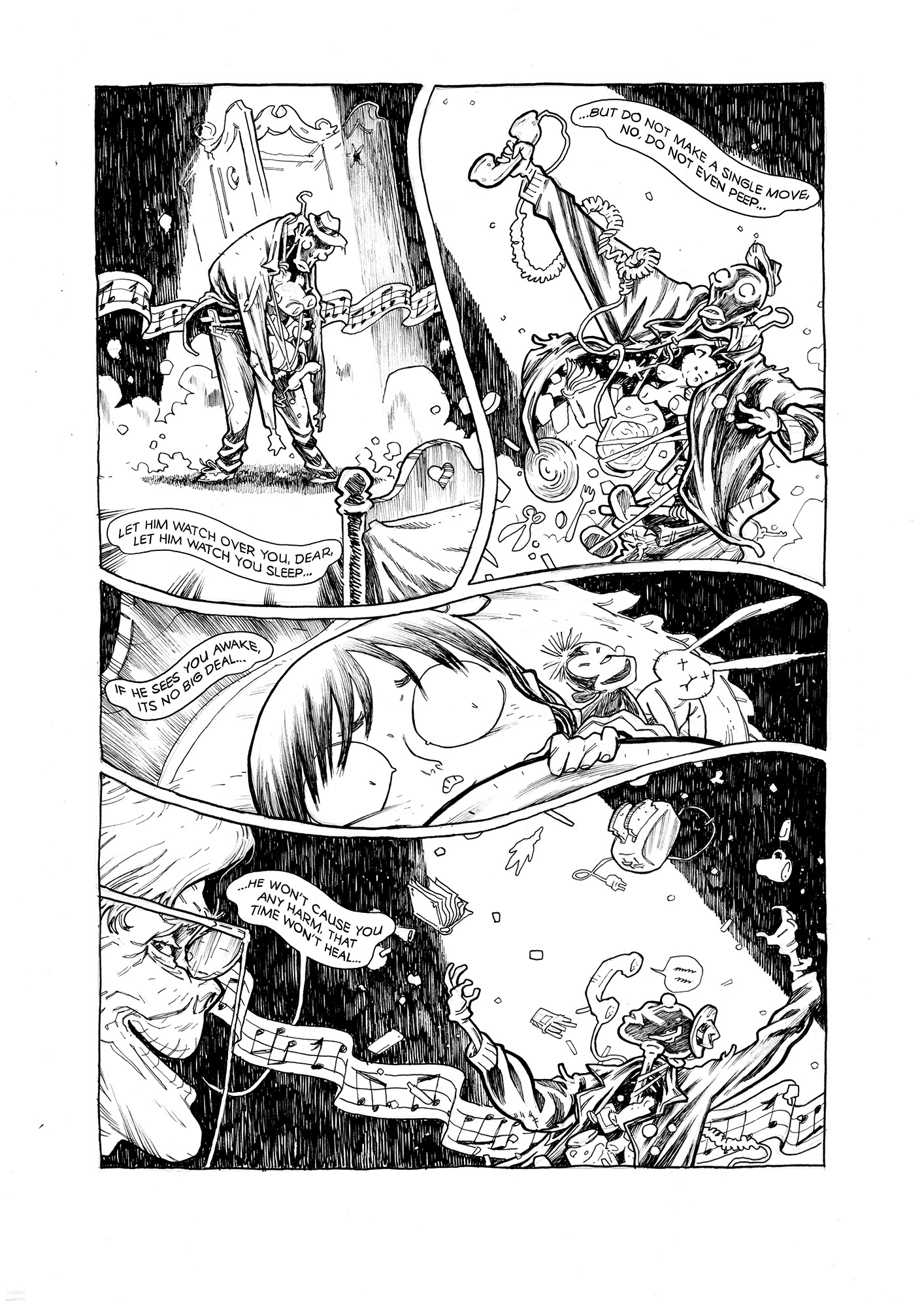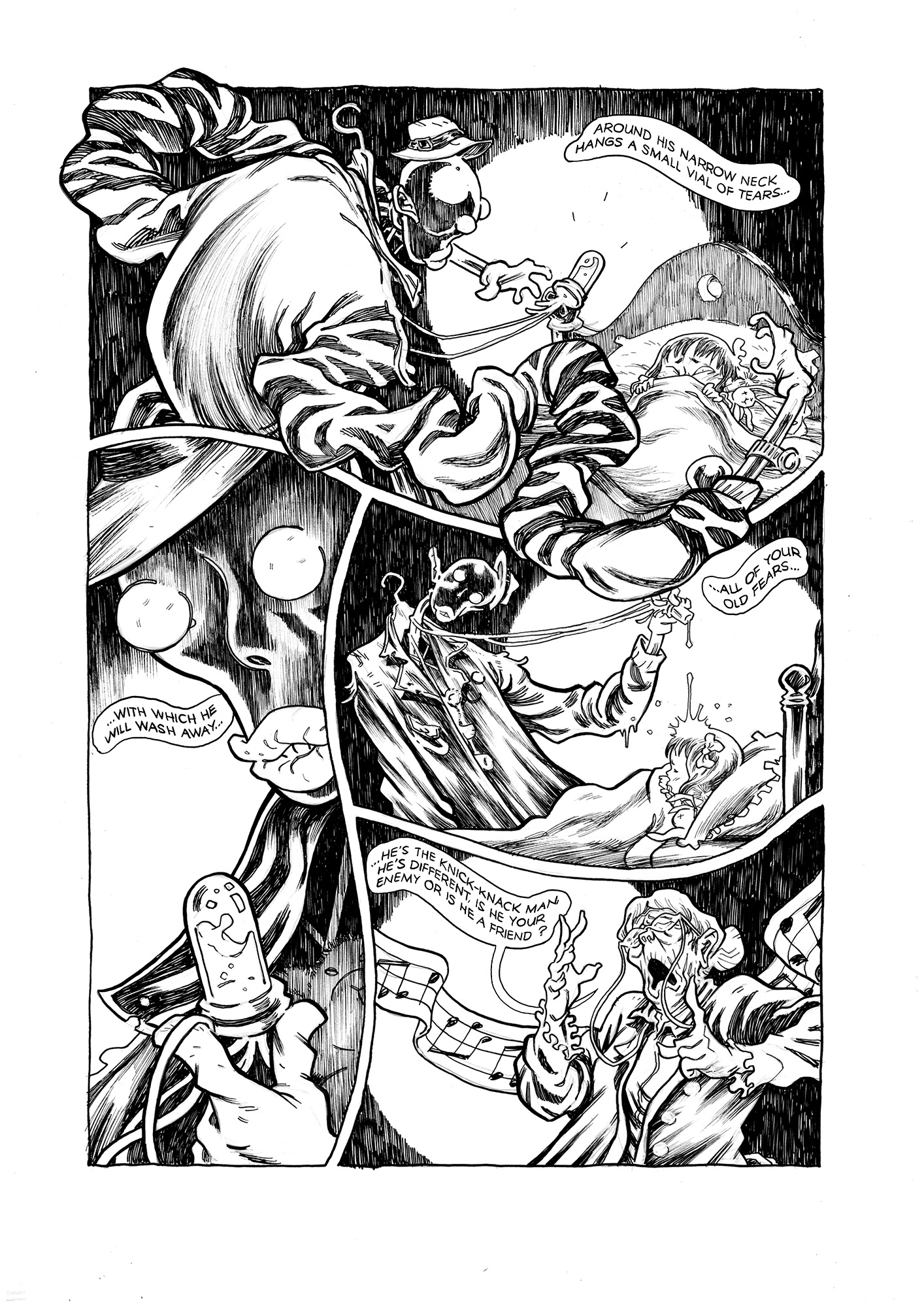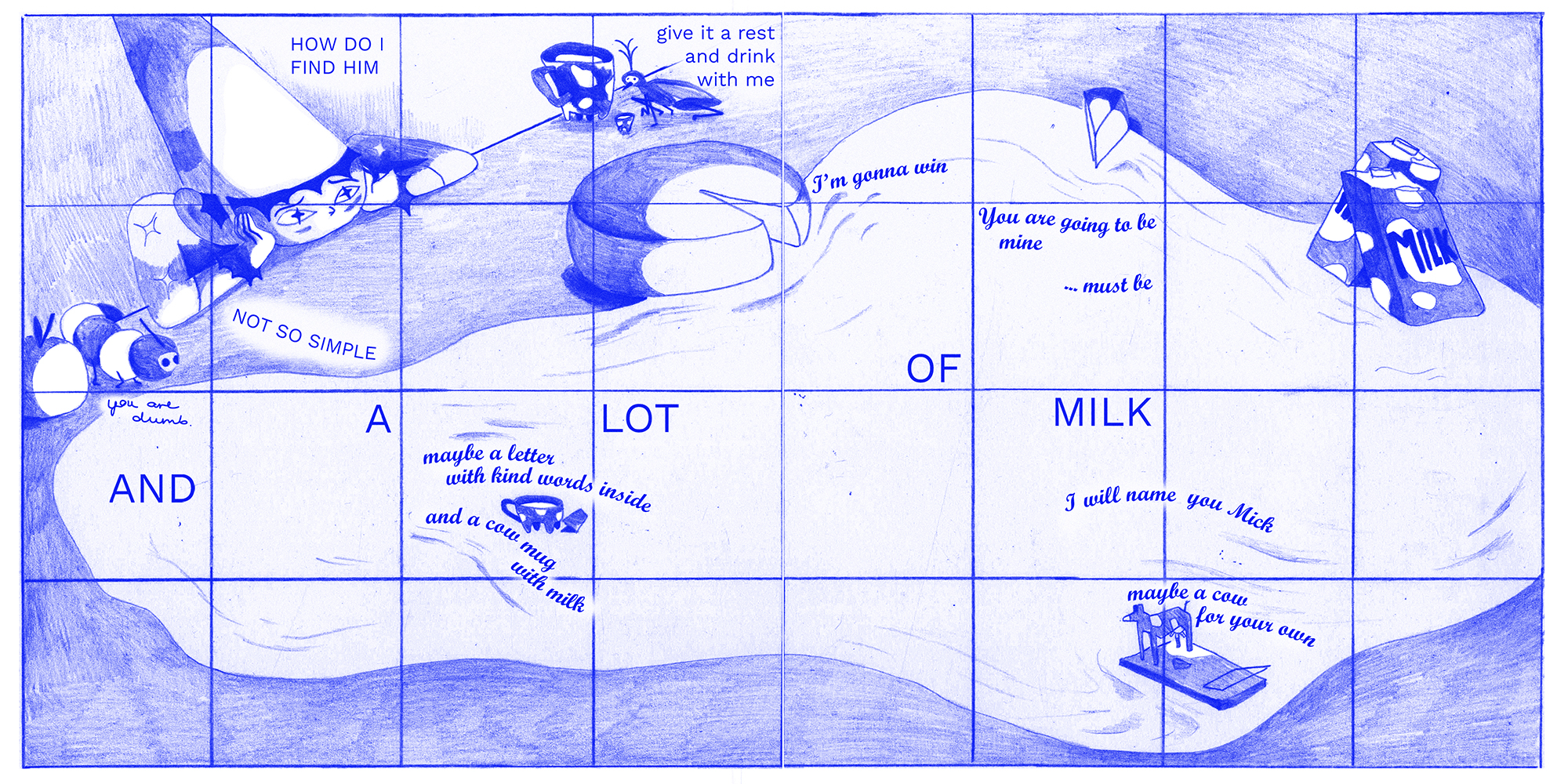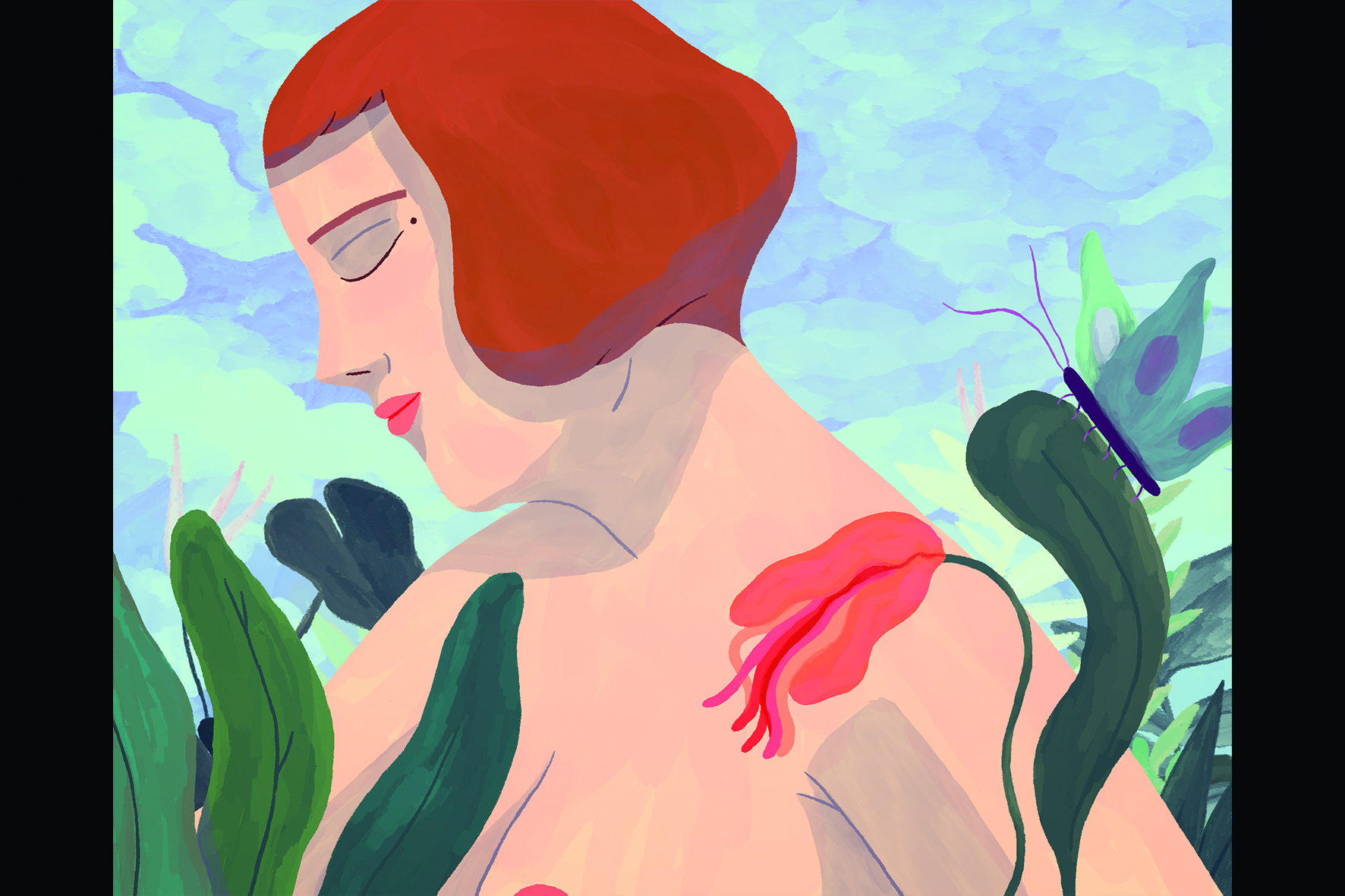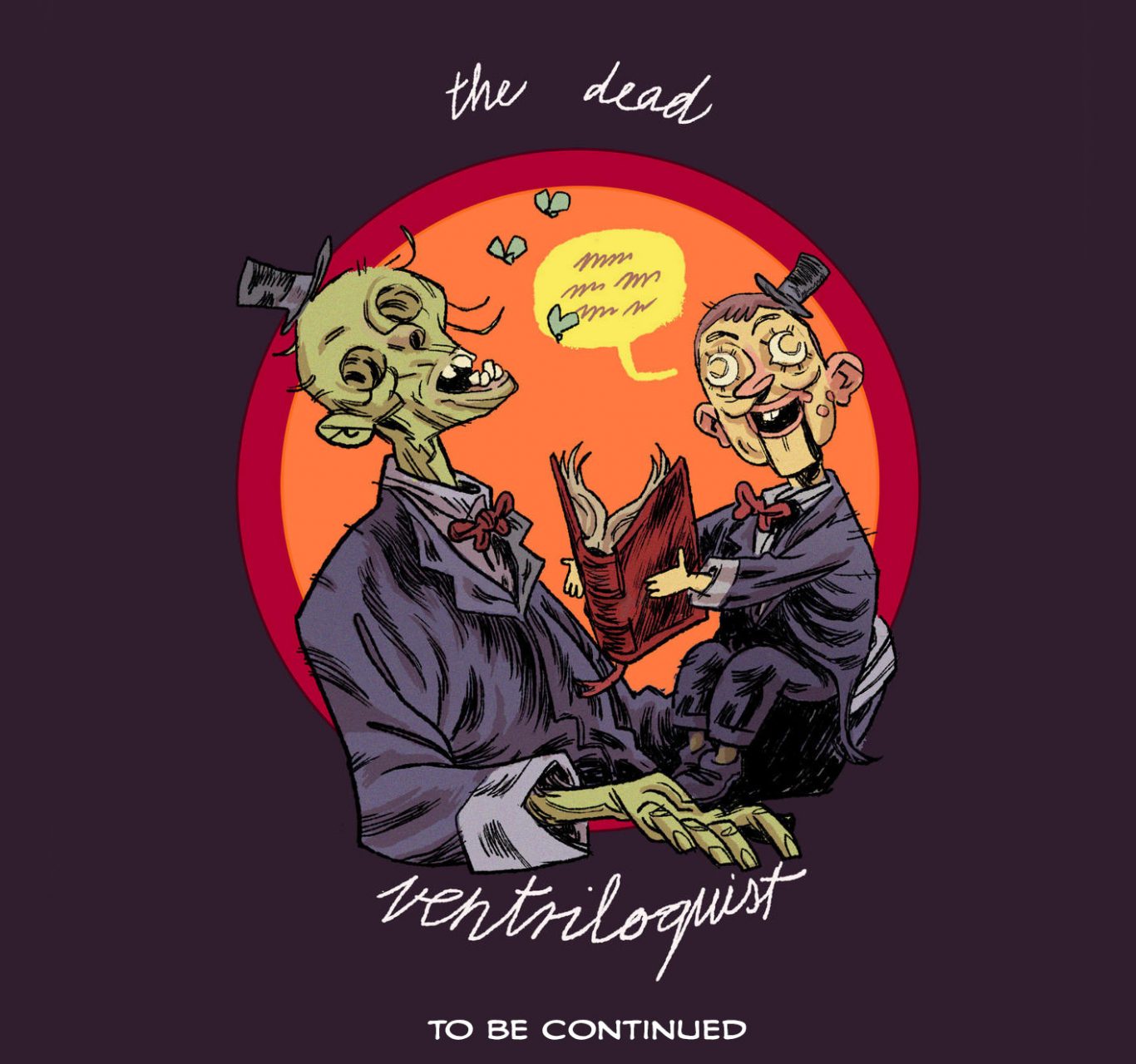
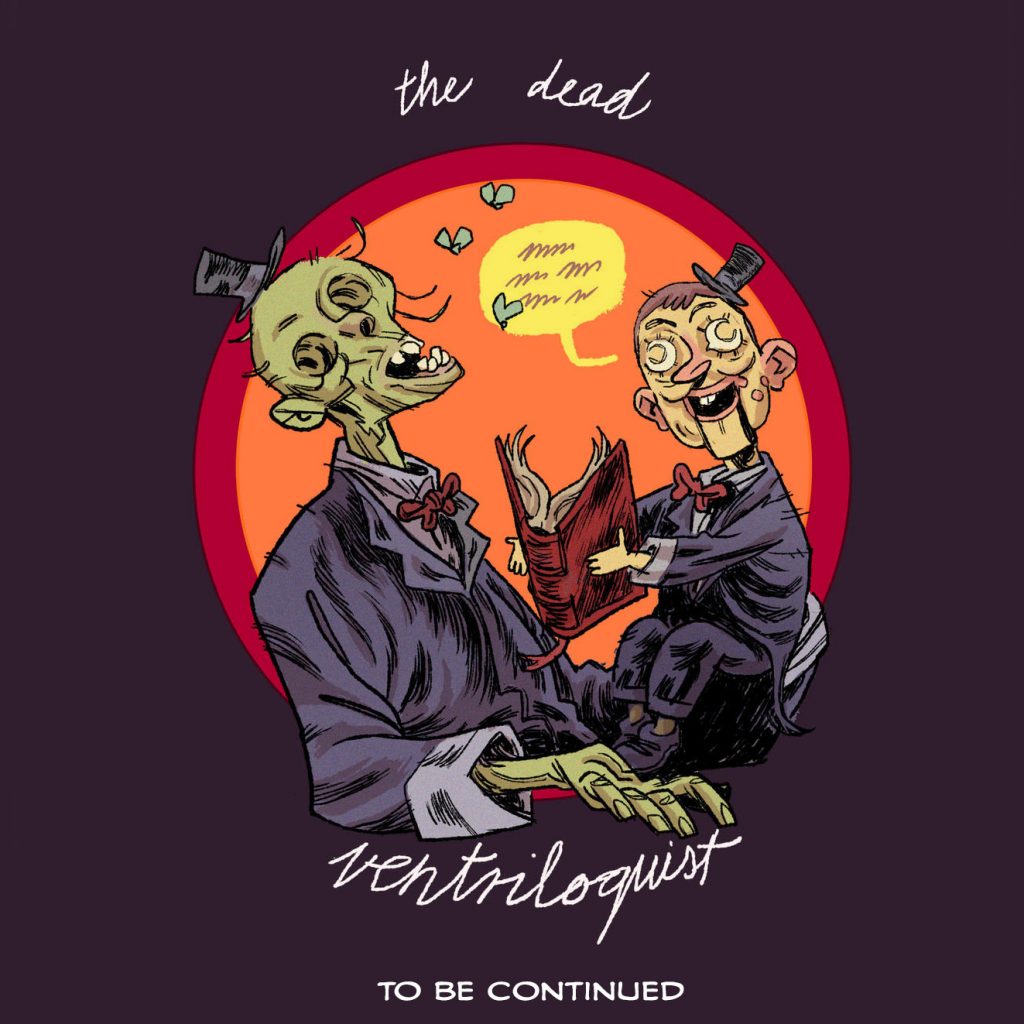
Rivals sleep paralysis – Márk László’s latest comic book
While László Márk is a well-known figure in the comic book scene, his name is also familiar in laymen’s circles. His themes, situations, and characters are mostly associated with the horror genre, not shying away from absurdity and offering a healthy dose of bizarre, dark humour. While his collaboration with creator of the iconic Hellboy comics Mike Mignola garnered significant attention, he has also produced several impressive comics on his own. His latest one, The Knick-Knack Man was released this February, featuring a grandma, her sleepless granddaughter, and a lullaby. What could possibly go wrong?
The Knick-Knack Man began as an experiment of self-induced fear, questioning the limits of Márk’s ability to frighten himself through his artwork. As the titular character took shape, things escalated, with the story’s backbone crafted in a single evening, a departure from his usual process. The charming, seemingly intimate feel of the opening panels gradually gives way to spine-chilling suspense, drawing readers deeper into the abyss. Masterfully exploiting the sequential nature of the comic book genre, Márk imperceptibly ups the dose of his grotesque fairy tale.
Where do monsters lurk? As every child believes – in the darkness? At least in classic tales of horror, that’s where they emerge from. In romantic stories, the night is filled with dread, whereas the day offers a safe haven. In the darkness, the biggest source of terror is metamorphosis. We are well aware that there are no scary monsters lying in wait, there is only us – us and our nightmares. Our nights are haunted by the anxieties of our days. In The Knick-Knack Man external and internal horrors converge, resonating with both our child and adult selves.
Márk’s greatest strength undoubtedly lies in visual storytelling, and he enjoys complete freedom in his treatment of it, constantly jumping back and forth between text and image. The spatial arrangement of static elements confronts readers with a choice, repeated page after page, panel after panel. With an intense atmosphere and symbolism, his dynamic compositions perfectly reinforce the narrative.
His black-and-white technique is considerably more complex than it appears at first. His stark lines, strong contrasts, dramatic play of light and shadow portray his nightmare world with great intensity. His distinctive characters, and meticulously drawn fictive spaces draw readers deep into the narrative. The strong focus on detail is somewhat suggestive of Mignola’s influence.Márk’s style not only sets the mood, but also serves a dramaturgical function.
Márk graduated in graphic design from the Vocational School of Arts and Crafts before studying Animation at the Moholy-Nagy University of Art. He also works as a freelance illustrator in addition to making comic books. His debut comic The Boy Who Loved a Ghost Clown published by the Literary Review was created as his diploma project. The story is the first episode of the anthology The Dead Ventriloquist, echoing the feel of EC Comics Tales from the Crypt. Since then, he has added two new episodes to the anthology.
With its unconventional, playful narratives and cunning visual structure The Knick-Knack Man pays homage to classic comics such as Little Nemo in Slumberland. It also evokes the opening scene of Edward Scissorhands, gently poking fun at its sentimentality without any malice. In some details inspired by the animations of Fleischer Studios, his dynamic visual style is peppered with iconic dance-like moves.
As the lullaby progresses, the panel layout breaks free from the conventional flow of left to right, becoming more diverse and fluid and taking a turn for the experimentational building on associations. As the chaos peaks, the layout completely breaks off from the conventional. The distorted characters spill over the panels and become entangled into the frames. The swirling motifs have a mesmerising effect on the reader illustrating the chilling madness engulfing the grandmother’s mind. The narrative and visual elements flow seamlessly into each other, practically existing on the same level. As the story is drawing to its end, the nightmare vision spills over into reality, bringing some relief, yet the closing dialogue transforms into an ominous prophecy keeping the reader in choking suspense.

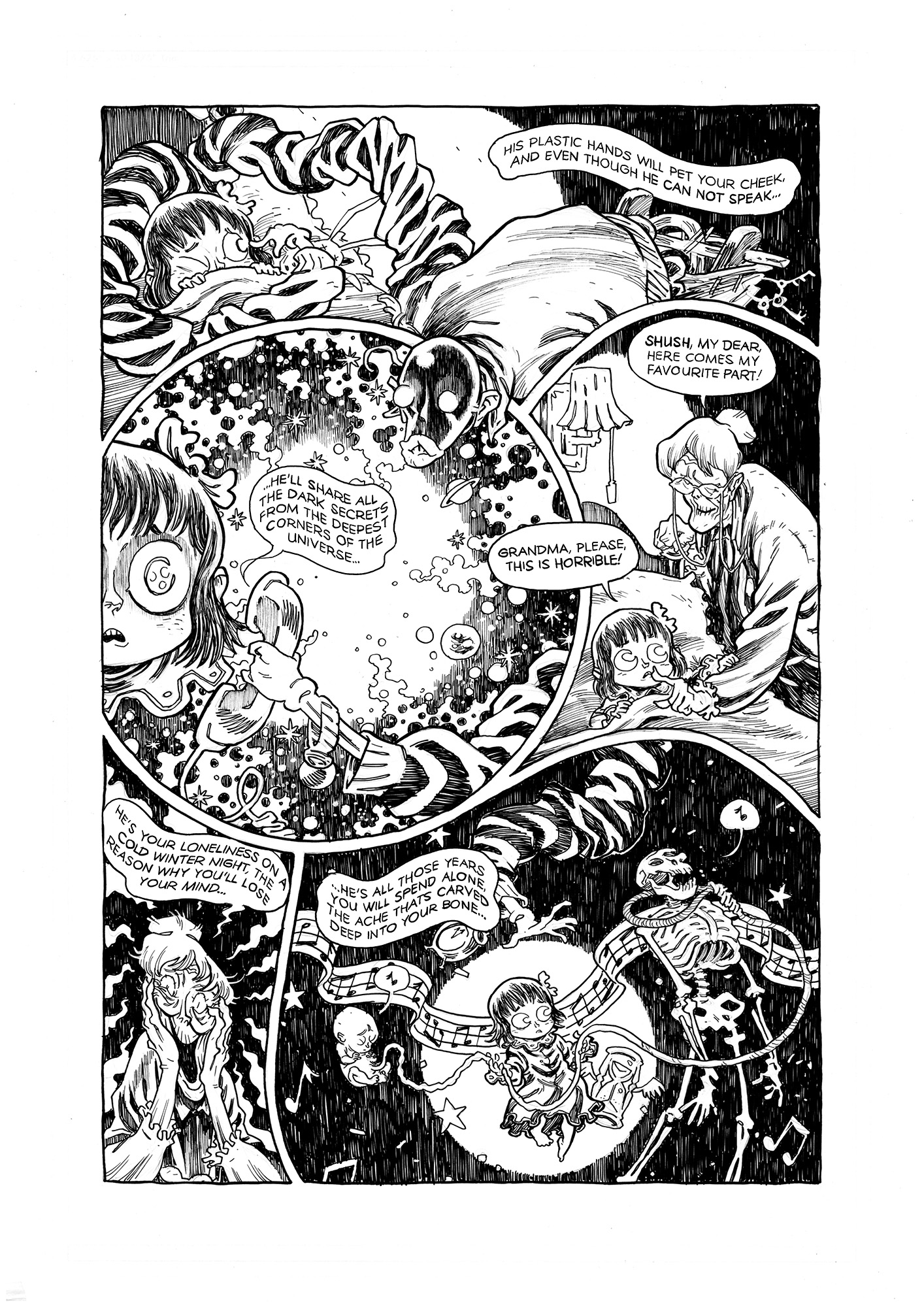
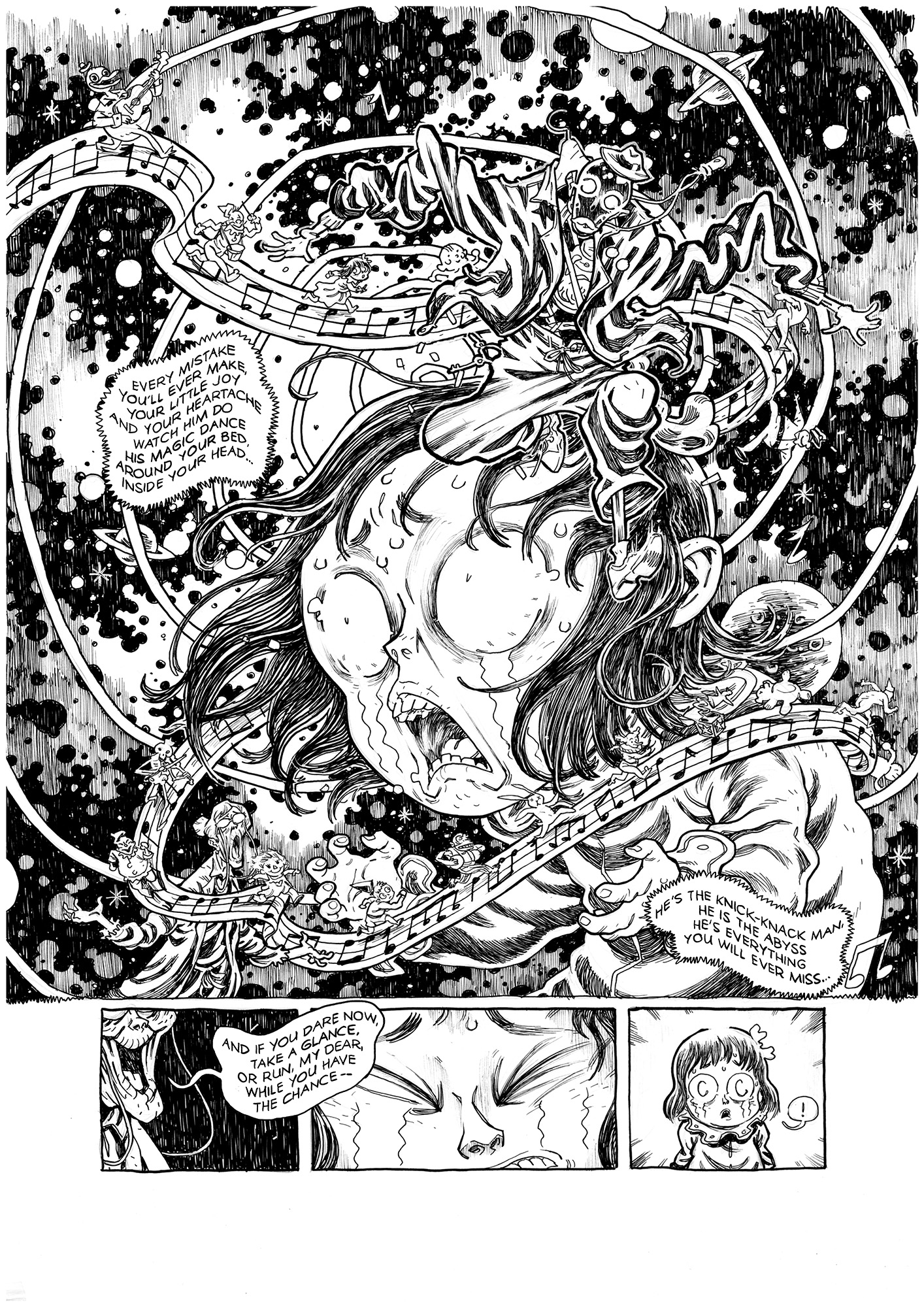
// /
